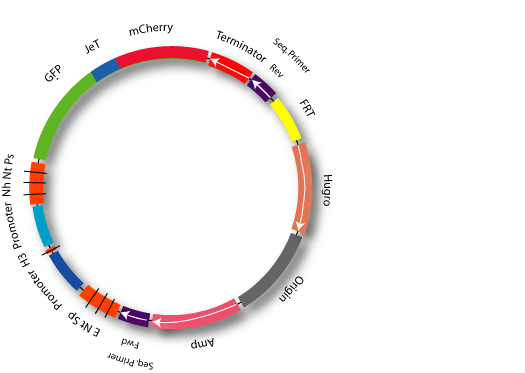Team:Heidelberg/Project dual assay plasmid
From 2009.igem.org
Dual Assay PlasmidIntroduction Figure 1: Planned Dual Assay Pasmid It contained a site for promoter exchange, where one can put the promoter, that has to be tested. This promoter is upstream the reporter gene GFP and regulates its transcription. This gene is followed by a Jet promoter that constitutively promotes transcription of a mCherry, serving as a reference. In order to control transfection efficiencies, we co-transfected pSMB_MEASURE (which expresses GFP under the control of the promoter of interest) with pSMB_REFERENCE (which expresses mcherry under the control of the JeT constitutive promoter). In flow cytometrie, we were able to first gate for the red fluorscence of mCerry and then for the GFP, which allowed for proof of transfection efficiencies. A more advanced method would bes to have both promoters and reportergenes on one plasmid. That way a 1:1 ratio of reference and measured part could be achieved, providing a standardized comparison of promoter strength, due to the elimination of different transfection efficiencies. This new way of measurement could be achieved by the following plasmid (Fig. 1)which we tried to clone during the summer.
ResultsUnfortunately the repeated cloning of the construct was not successful (see Dual assay plasmid). DiscussionAlthough we had several cloning strategies and tried each of them many times we were not able to build this advanced measurement plasmid. One probable reason for the failure of that subproject could be the size of the plasmid: The inserte became very large and without advanced cloning tools, we were not able to ligate them into the backbone.
|
 "
"